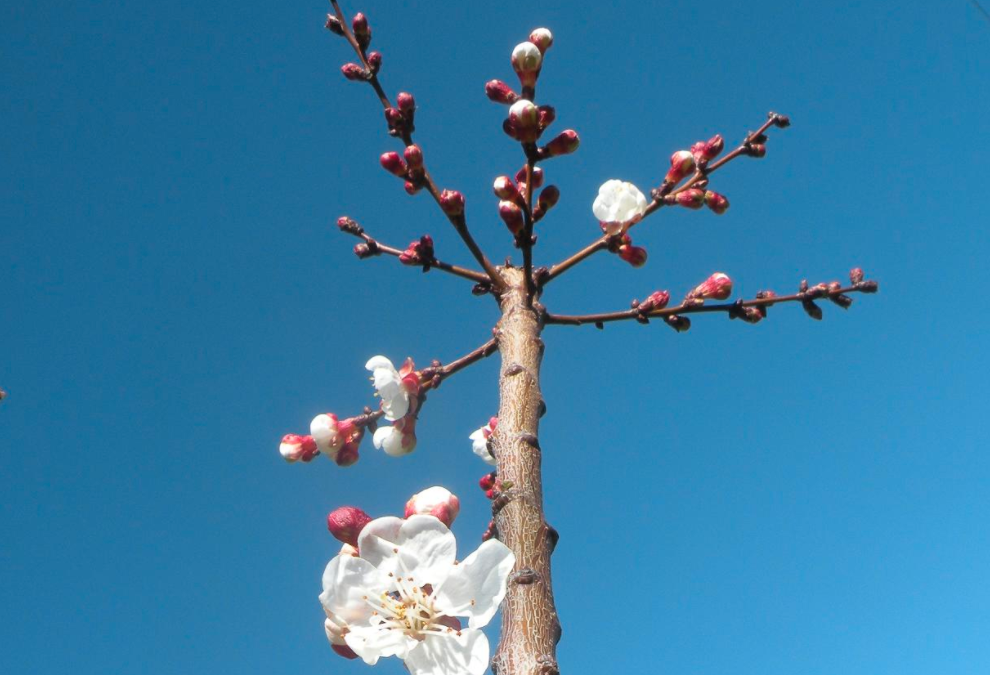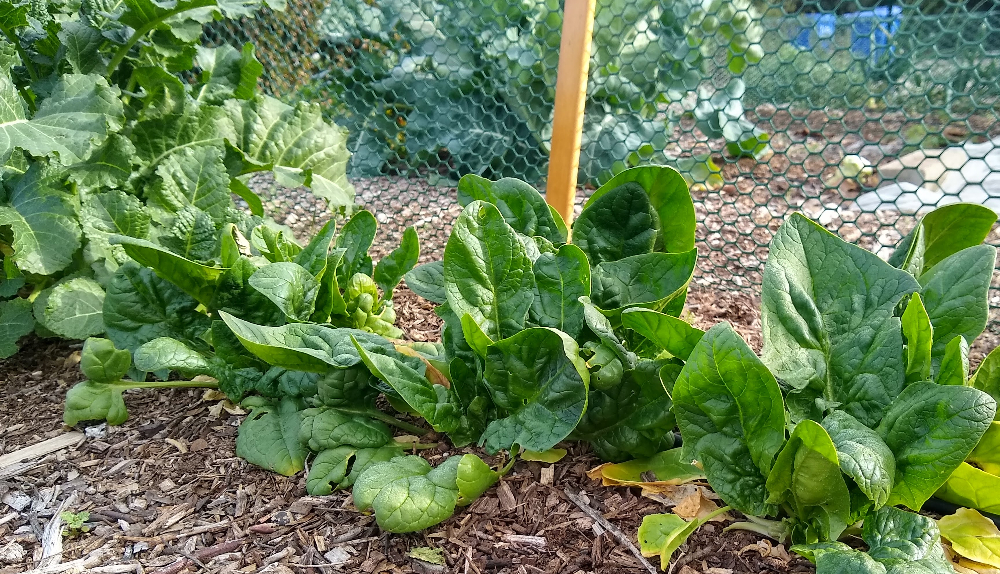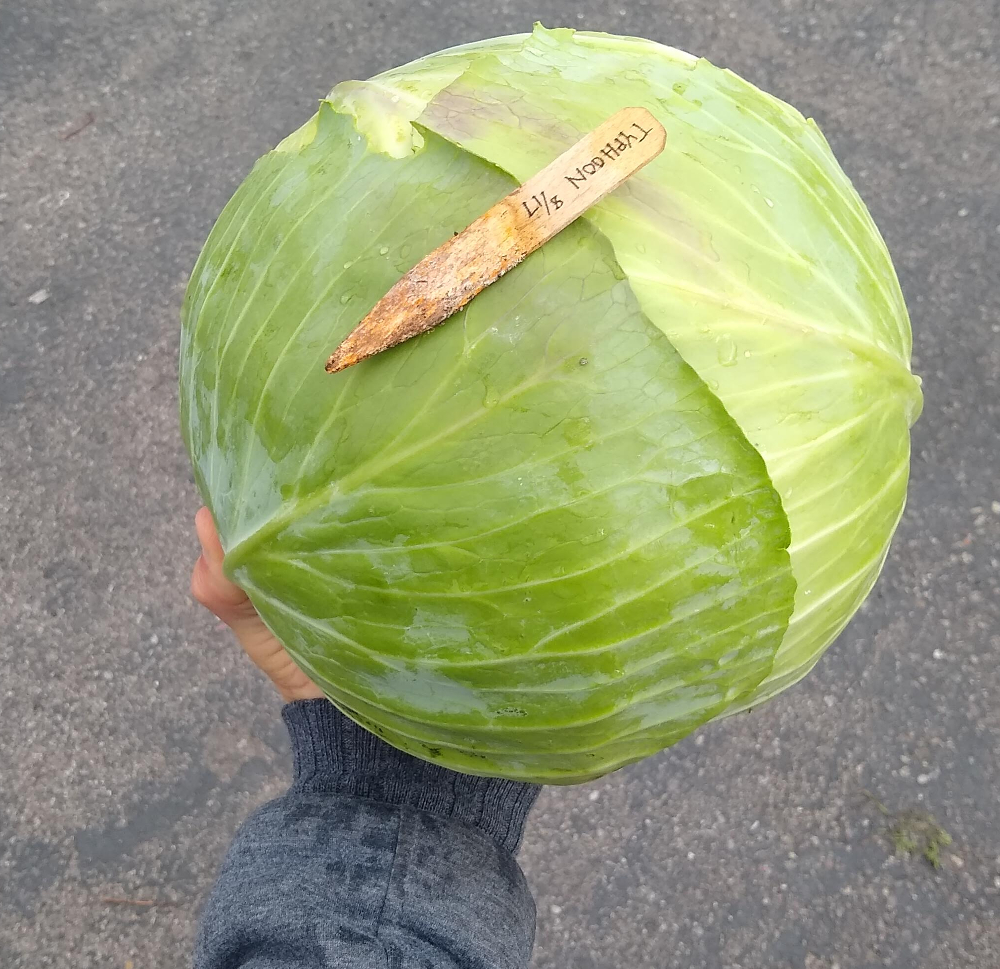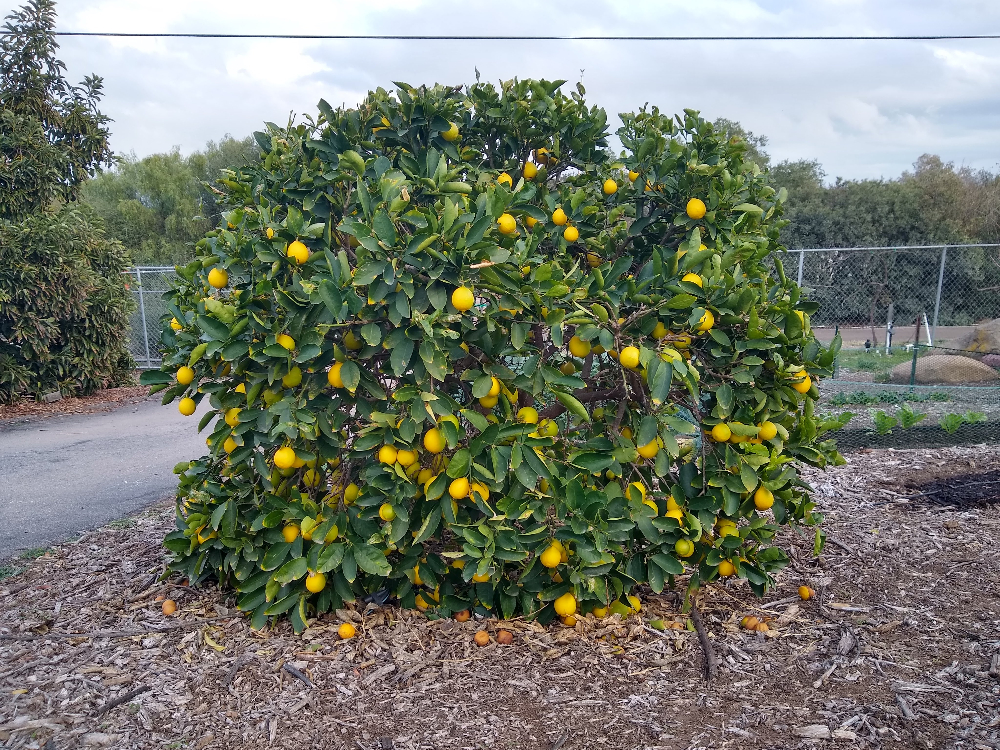And winter’s over. Did you blink and miss it? There are sure to be a few more chilly mornings and a few more rainstorms, but look outside: the plants are already waking up. February could be considered our first month of spring.
Native plants are well on their way, as acorns germinate into baby live oak trees and wild cucumber, lemonade berry, sugar bush, and manzanita bloom; but also, a couple of my avocado trees already have some open flowers and my blueberries are blooming. By the end of the month, apricots (as pictured above during February 2016), peaches and plums, they’ll all be opening flowers.
February is my favorite month of the year. Yes, my first-born son arrived in February, but I also like this month because I many plants start to bloom and our Southern California landscape briefly glows green with grasses, mustard, filaree — all weeds, but wow do they make this place look lush like Tennessee for a slice of time.
Temperatures are wonderful for afternoon hikes. The air is filled with the freshness of a rain that just passed or the potential of a storm on the way. There’s also the potential of all of those flowers. Will my pluot tree set a lot of fruit? How many blueberries will we get?
Opportunities in the yard
And there are opportunities. We can:
– Sow or plant: artichoke, asparagus, cilantro, parsley, peas, carrots, lettuce, beets, greens (chard, kale, turnip, mustard, collards), green onions, potatoes, spinach
– Plant only: brassicas (broccoli, cabbage, cauliflower)
– Clone a grape vine, fig tree, or pomegranate tree by rooting a cutting
– Buy and plant bare-root fruit trees before they get potted up
– Transplant shoots of your raspberry plants and runners of your strawberry plants
– Collect or redirect any rain we get so it sinks into your yard near your plants and isn’t lost into the street
– Pull weeds at the right time for maximum effectiveness: soon after a rain so the soil is moist, but just before a Santa Ana so you can leave the weeds right there on the ground and the dry air will desiccate and kill it
– Change irrigation on fruit trees as necessary (e.g. from drip lines to mini-sprinklers); do it now before your plants start depending on irrigation in a couple months because the current mild weather and thoroughly moist soil from rains allow plants to most easily adjust to new patterns of soil moisture
– Mulch under fruit trees with wood chips; the mulch sort of seals in the soil moisture, and then upcoming rains should soak the mulch for free
– Prune deciduous fruit trees and grape vines; it’s easy to see the structure of the bare branches now
– Harvest fresh peas, broccoli, cauliflower, cabbage, lettuce, Brussels sprouts, kohlrabi, chard, spinach, carrots, strawberries, parsley, cilantro
– Harvest Fuerte, Bacon, Zutano, Pinkerton, Sharwil, Ettinger, and Sir-Prize avocados
– Harvest some citrus, such as navel oranges, blood oranges, Cara Cara oranges, Kishu and Satsuma mandarins, and Bearss limes
All of my Yard Posts are listed here







Feb has been our first month of spring in Dana Point for several years now. But last year it was January, and this year it started in DECEMBER and I don’t like it! Last year and the year before, we had a wetter April and May than we used to get, but I worry that this year the rain won’t come. I use my rain barrels to soak everything right before the rain, which makes the most of it. Also, I had to let the barrels run while it was raining and let them fill at the end. Not an easy task to calculate, esp depending on what time the rain is happening. This is all especially important for the lemon trees, who do not like tap water without rain to balance it out. I hope we get some rain before March arrives or all the wild grasses are going to shrivel.
Hi Laurie,
I was just looking at the grasses in my yard. They’ve had a roller coaster of a season. They germinated after we got that first rain in early October, and then their growth paused through the dry November. After the great rains of December, they grew rapidly in January but now they’re slowing again as the soil moisture dries up, again. Weather!
What I find really good this month of Feb (and were good in January) Oro Blanco Grapefruit, Moro blood oranges, and the usual Washington navel and Cara Cara oranges. The Fukomoto oranges were early and really sweet in January. The rats just started eating my Tahoe Gold Mandarins, so they should be ready soon. They always take the most ripe and sweetest fruit first – “Those dirty rats!”.
Hi Rick,
Shiranui? I ate one the other day that was surprisingly delicious. I’d thought they wouldn’t be so sweet yet.
Hi Greg, I don’t know what is going on with my Navel and Valencia Orange trees this season. I have had almost no Navels. And the Valencia still has a lot of oranges. I pick every day and juice a few. I figured they are leftover from the last season, but some are not sweet. Most are. I have been in this house 3 years and before this year I always had plenty of each orange type at the appropriate time.
Hi Greg: happy Feb !! i have a 40+ year old Fuerte that’s approx 40’tall and the canopy is easily 30’ across. in the last year or two the leaf size has gotten much smaller, tips burn easier and fruit production has decreased from 100 to approx 16 this harvest. Is it possible my tree is too large for the yard area I have and needs an more aggressive trim (topping) for amount i water(weekly) and the yard area I have?. Live in Oceanside. Thank you
Hi Joseph,
Small leaves and burned tips and decreased production can mean the tree hasn’t been getting enough water, yes. Reducing the size of the canopy would reduce its water needs, yes. But you’d want to also assess the health of the roots. What is under the tree? Natural ground, pavement, lawn? If the area under the tree is compacted or covered, then it is not a happy environment for roots and that might be part of the problem.